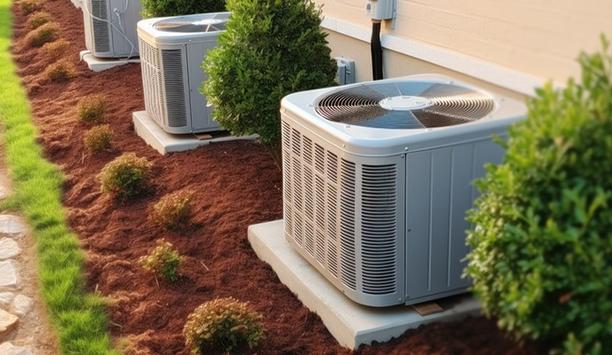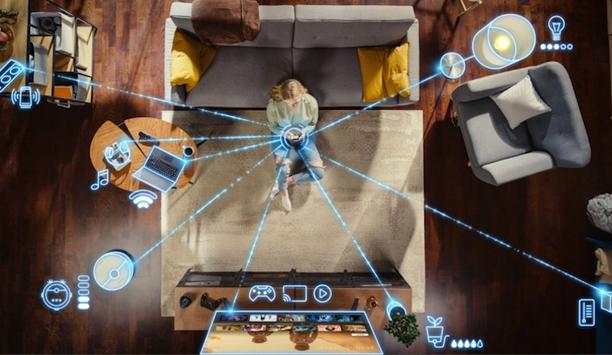Artificial intelligence (AI) provides a tool to deliver significant savings and dramatically reduce carbon emissions, enabling a self-operating building. Because of AI’s ability to be proactive in buildings, rather than reactive, a 25% reduction in total energy costs is possible, along with a 20-40% decrease in carbon footprint.
"Our mission is to fight climate change by bringing innovation and cutting-edge artificial intelligence to the built environment, making buildings smarter and greener," said Jean-Simon Venne, Co-Founder and CTO of BrainBox AI.
BrainBox AI
BrainBox AI is at the forefront of a new era in building automation and a leader in the green building transformation. Located in Montreal, Canada, BrainBox AI offers a technology that combines deep learning, cloud-based computing and autonomous decision-making to support a 24/7 self-operating building. BrainBox AI’s solution enables the HVAC (Heating, Ventilation and Air Conditioning) system in a building to operate autonomously, in real-time.
“Some 20% of global greenhouse gas emissions originate from buildings, and HVAC systems are responsible for over 50% of those emissions. BrainBox AI is comprised of experts in the fields of artificial intelligence (AI), data science, real estate, HVAC and energy efficiency, all working to create a better future,” said Jean-Simon Venne.
AI technology thrives in logical environments
AI technology thrives in logical environments, and HVAC systems are extremely logical"
Venne adds, “AI is very stable and super predictive. AI technology thrives in logical environments, and HVAC systems are extremely logical. A fan, for example, will continuously have the same behavior, over and over again.”
Due to HVAC’s predictability, AI can study a building and learn how it operates, identify each potential improvement opportunity, and then act on them. AI is also able to monitor a multitude of data points at once, so it’s more reliable in optimizing HVAC systems in real-time than humans alone.
Communicating with HVAC controls
Communicating with HVAC controls is a requirement of applying AI to the HVAC market. There are over 700 control languages currently being used for HVAC control. Looking at the big picture, about 20 of those 700 languages make up 80% of the market.
BrainBox AI’s system focuses on the 20 or so dominant languages. Part of their minimum requirements for system integration is that the HVAC system must speak one of those 20 languages.
Autonomous real-time cloud connection
BrainBox AI also recently launched a driver for the Niagara Framework, the first AI application to use an autonomous real-time cloud connection to the platform, which is the leading open platform for the building automation market. Their Niagara driver allows the platform to connect to a building’s management system (BMS) through the cloud, thus decreasing the connection time to less than 30 minutes.
“If you’re going to use AI, you really need to use the cloud, in order to use the proper computing power,” said Venne, adding "Using a cloud system makes it easier to store and share information. For example, if you’re a building owner, the cloud system can give the building owner visibility into all the data being collected and a holistic view into what’s happening in their buildings.”
Autonomous AI HVAC system
BrainBox AI's customer AMP Capital is now the first organization to install an autonomous AI HVAC system"
Venne further stated, “BrainBox AI's customer AMP Capital is now the first organization in the world to install an autonomous AI HVAC system across its managed real estate portfolio. But how does an automated system adapt to the changing and possibly competing comfort preferences inside a building? It's an excellent question.”
The AI solution is all about predictive behaviors, but that sometimes requires compromise. There will always have be someone who prefers to work in 60 degrees and someone else who prefers to work in 80 degrees.
"Because BrainBox AI collects thousands of real-time data points such as outside temperature, sun/cloud positioning, fan speed, duct pressure, heater status, humidity levels, occupant density and more, we’re able to report a 60% improvement in occupant comfort thanks to an improved respecting of set points," adds Venne.
Airborne Virus Mitigation Program
In the age of a global pandemic, airborne viruses, such as COVID-19’s SARS-CoV-2, can be re-circulated non-deliberately throughout building HVAC systems, creating a liability to building owners and operators.
To help proactively mitigate the potential spread of pathogens and improve air quality in buildings, BrainBox AI provides commercial buildings access to its Airborne Virus Mitigation Program (AVMP). Through AVMP, BrainBox AI instructs the HVAC system to operate as instructed to minimize the spread of contaminants and improve air quality, based on CDC and ASHRAE guidelines.
 |
| BrainBox AI’s system focuses on the 20 or so dominant languages |
Supporting buildings with partial HVAC system shutdown
Additionally, many commercial buildings are significantly less occupied than usual during the ongoing COVID-19 pandemic. BrainBox AI supports these buildings by proceeding with a complete or partial shutdown of their HVAC system(s). BrainBox AI’s cloud-based technology optimally instructs the networked HVAC system to decrease its operations to a minimum, enabling up to 30% in energy cost savings.
BrainBox AI's go-to-market strategy is comprised of three different parts. First, the company has its own sales force, which is deployed mainly in North America, but also in APAC and EMEA, where they can sell directly to building owners and operators. The company also uses reseller partners for commercialization, which are usually system integrators or local integrators.
These partners are typically already selling controls to different building owners and operators in regional markets. Now, they have the opportunity to provide their clients with BrainBox AI. They are also using this strategy globally.
Partnerships with OEMs
BrainBox AI is developing partnerships with original equipment manufacturers (OEMs)
Lastly, BrainBox AI is developing partnerships with original equipment manufacturers (OEMs) to help support their individual strategies of implementing artificial intelligence into their existing HVAC and controls products.
“We’re just now starting to really see the impact that automating building HVAC systems can have,” said Venne, adding “Buildings have been non-adaptive for such a long time, but now with building automation, we’re really starting to change that. Right now, AI thrives on predictability, based on the thousands of data sets it’s able to collect. That being said, the weather keeps changing outside, with global warming continuously on the rise; building mechanics should react and adapt to that.”
AI building blocks
Venne further stated, “Humans are also not robots, they gather in different areas in the building and don’t always have the same patterns. It's a challenge to enable and train AI to be more adaptive in that sense. AI building blocks eventually will aggregate together and give more intelligent insights, ultimately creating a more intelligent city and eventually a much more intelligent world that can be operated by AI, under the watchful eye of humans.”
“A misconception is that this technology will ‘steal’ jobs from humans and replace them,” stated Venne, adding “Naturally, that makes people a bit scared. Right now, every building has only a few people operating the building system. They are so frequently called to change an office’s thermostat that utilizing AI actually makes their job easier.”
Controlling and optimizing building HVAC systems
We’re reaching a very interesting time in terms of AI and technology in general"
He adds, “By allowing BrainBox AI to control and optimize the HVAC systems in buildings, the building operators are able to spend more time running the building, rather than flipping switches and changing temperatures. We’re reaching a very interesting time in terms of AI and technology in general."
Venne further stated, “All my life I was given limitations, hearing 'no, we can’t do this, the computers can’t handle this, etc.’ But right now we’re reaching the point where we’re not limited by our technology capabilities, we are only limited by our imagination."
He concludes, “It’s just a matter of breaking that imagination wall to find a way to create even more value with the existing technology today. Things are accelerating and we’re going to need to move forward. We shouldn’t be scared, but rather embrace it and accelerate forward.”






































